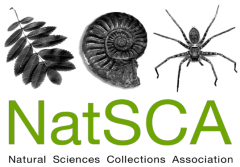Within many biological collections around the world, it is known that Dermestes beetles are used in the preparation of osteological material, as part of the collection management protocols. Despite the fact that the use of these beetles is common, management so that the yield of a colony is optimal is not entirely clarified. In this study, we present the conditions and procedures in the management of a colony of dermestids in order to provide a standard system within the collections. The colony must be kept in an isolation infrastructure, under controlled conditions of temperature (23.26 to 28.54 °C), relative humidity (52.43%) and darkness. The material intended for osteological cleaning should be introduced into the colony without viscera, eyes, tongue, brain, skin, hair or feathers, and large areas of muscle. If the material is dehydrated or has been preserved with chemicals, these should be treated beforehand with distilled or deionized water (to rehydrate or wash, respectively). After the beetles remove all soft tissues, the material should be cleaned with ammonia to remove fat and beetle eggs. Subsequently, the skeleton or bones are dried at 40 °C. The dermestarium should be cleaned every two to three months to prevent the colony from decreasing due to contamination.
